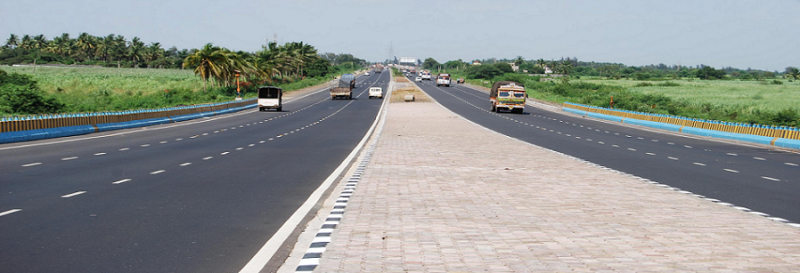India is one of the largest countries in the world and the second most populated country in the world after China. To support the increasing demand for raw material and finished goods, it requires a well-developed transportation system. Every year nearly 8 billion people travel across India via railways and railways contribute to transporting 1050.18 million tons of freight every year but railways alone are not capable of handling the demand of 1.2 billion people. As the economy boomed it become important to concentrate on road infrastructure as well and Indian government initiated the construction of Golden Quadrilateral. It was one of the many ambitious projects that India started in the 21st century. Here are some key facts about The Golden Quadrilateral (G.Q).
1: Golden Quadrilateral is the largest highway project completed in India. It is also the fifth-longest highway project in the world. The project was launched by NDA Government led by then Prime Minister Atal Bihari Vajpayee in 2001. Shri Atal Bihari Vajpayee once said, “Our roads don’t have a few potholes. Our potholes have a few roads.”
2: Planning for the Golden Quadrilateral project was completed in 1999. The project included the construction of new express highways and extension of existing roads from four to six lanes. The project was officially started in 2001.
3: The overall length of the quadrilateral is 5,846km. The project consisted of constructing/expanding four and six-lane express highways. Upon completion, it connected four major metro cities of India i.e. Delhi, Mumbai, Chennai, and Kolkata
4: The work on Golden Quadrilateral was completed under the National Highways Development Project (N.H.D.P) and this project was managed by the National Highways Authority of India (N.H.A.I) formed in 1988.
5: The Golden Quadrilateral passes through 13 states of India. Andhra Pradesh shares the highest length of road (1014 Km) and Delhi has the lowest (25 Km).
6: Only National Highways of India were used for the construction of Golden Quadrilateral and no state highways, expressways or Rural-Urban roads were used. Upon its completion, it provided connectivity to major industrial, agricultural, and cultural centers of India.
7: To complete the G.Q, 128 separate contracts were awarded. In total, 23% of the work was completed by the end of 2002, 80% by the end of 2004, 95% by the end of 2006, and 98% by the end of 2010. Differences in completion points were due to initial delays in awarding contracts, land acquisition and zoning challenges. Funding delays also played a major role.
8: To complete the Golden Quadrilateral, the whole project was divided into four sections. Section I was a 1,454km stretch of National Highway from Delhi to Kolkata. Section II was a 1,684km stretch from Kolkata to Chennai. Section III was a 1,290km stretch from Chennai to Mumbai. Section IV is a 1,419km stretch between Mumbai and Delhi.
9: The project was planned to complete by 2006 but due to delays it was completed in 2012. The striking part of the project was, the initial cost to complete this project was estimated to be INR600bn ($13.2bn) but it was completed in about half of the estimated costs, at INR308.58bn. A very rare thing to happen in India!
10: As everything come at a price, this price was paid by Satyendra Dubey, an Indian Engineering Service (IES) officer who was murdered in Gaya, Bihar. He was the Project Director in the National Highways Authority of India (NHAI) at Koderma. He exposed corruption in the Golden Quadrilateral highway construction. He was killed by construction mafia on 27 November 2003.
If you really like our article, do share it with your friends.
